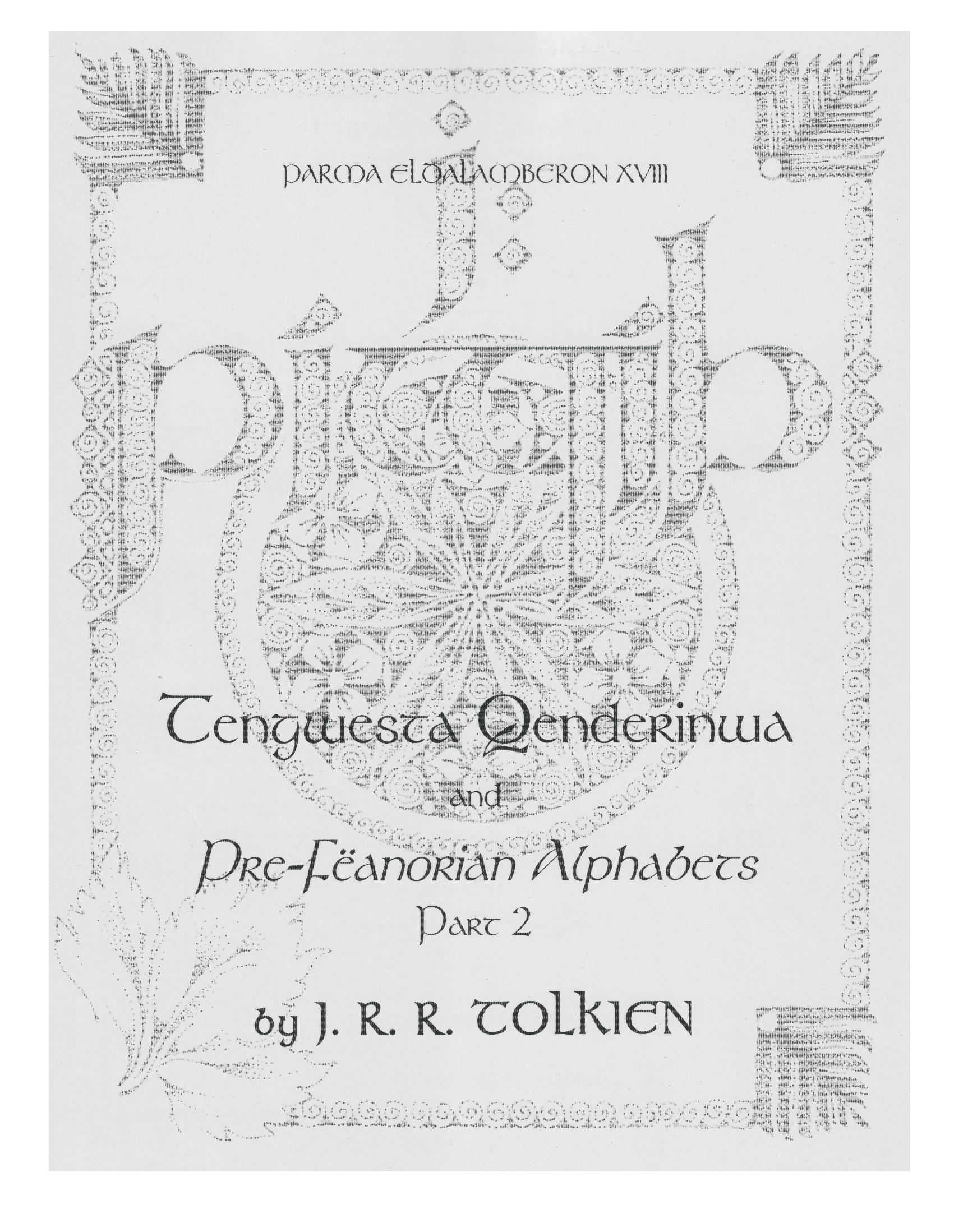Description
Parma Eldalamberon 18 presents previously unpublished writings by J. R. R. Tolkien concerning his Elvish languages and early versions of his invented scripts. These have been edited and annotated by Christopher Gilson, Arden R. Smith and Patrick H. Wynne, under the guidance of Christopher Tolkien and with the permission of the Tolkien Estate.
The Tengwesta Qenderinwa is a grammar of the Primitive Quendian language, which Tolkien imagined to be the common ancestor of the various Elven-tongues spoken in Middle-earth, such as Quenya, Noldorin, Lemberin and Pereldarin. The earliest version was composed in the late 1930s around the same time as 'The Etymologies.' The Tengwesta Qenderinwa describes the grammatical rules for the structure of these bases and the derivation of primitive stems and words from them. It gives an 'Account of the Simple Component Sounds'; and has sections on 'Base-structure'; 'Combination of Sounds in Word-formation'; 'Suffixion'; and 'Accentuation.' There is also an introductory section on the 'Descent of Tongues' that outlines the historical divisions of the various Elven-kindreds and the languages they spoke, all descended from Primitive Quendian. Tolkien revised the Tengwesta Qenderinwa in the early 1950s. Both versions are presented, with an editorial analysis of the revisions between the 1930s and 1950s.
The Pre-Fëanorian Alphabets is an edition of Tolkien's charts and notes from about 1924 to 1929 dealing with the scripts that conceptually precede the Fëanorian Tengwar eventually included in The Lord of the Rings. 'Pre-Fëanorian Alphabets, Part II,' describes the alphabets called Qenyatic, Andyoqenya and Angloquenya, in modes which were designed for writing English. Tolkien's examples of the scripts are reproduced in fascimile. Transcriptions of the examples and editorial commentary on the dating and historical background are provided.
The Tengwesta Qenderinwa is a grammar of the Primitive Quendian language, which Tolkien imagined to be the common ancestor of the various Elven-tongues spoken in Middle-earth, such as Quenya, Noldorin, Lemberin and Pereldarin. The earliest version was composed in the late 1930s around the same time as 'The Etymologies.' The Tengwesta Qenderinwa describes the grammatical rules for the structure of these bases and the derivation of primitive stems and words from them. It gives an 'Account of the Simple Component Sounds'; and has sections on 'Base-structure'; 'Combination of Sounds in Word-formation'; 'Suffixion'; and 'Accentuation.' There is also an introductory section on the 'Descent of Tongues' that outlines the historical divisions of the various Elven-kindreds and the languages they spoke, all descended from Primitive Quendian. Tolkien revised the Tengwesta Qenderinwa in the early 1950s. Both versions are presented, with an editorial analysis of the revisions between the 1930s and 1950s.
The Pre-Fëanorian Alphabets is an edition of Tolkien's charts and notes from about 1924 to 1929 dealing with the scripts that conceptually precede the Fëanorian Tengwar eventually included in The Lord of the Rings. 'Pre-Fëanorian Alphabets, Part II,' describes the alphabets called Qenyatic, Andyoqenya and Angloquenya, in modes which were designed for writing English. Tolkien's examples of the scripts are reproduced in fascimile. Transcriptions of the examples and editorial commentary on the dating and historical background are provided.
Details
Publisher - BookVAULT Publishing
Language - English
Perfect Bound
Contributors
By author
J. R. R. Tolkien
Edited by
Christopher Gilson
Patrick H. Wynne
Arden R. Smith
Published Date - 2025-09-06
ISBN - 9781806545193
Dimensions - 27.9 x 21.6 x 0.9 cm
Page Count - 150
Payment & Security
Your payment information is processed securely. We do not store credit card details nor have access to your credit card information.

